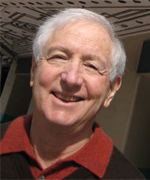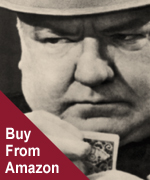Vaudeville Wars Guide to Primary Sources
An extensive search for the complete business records of the Keith-Albee and Orpheum circuits revealed that they no longer exist. It is possible nonetheless to authentically tell the story of the big time from numerous other primary sources described below.
A rich resource for understanding how the Keith-Albee and Orpheum circuits controlled the big time are found in the records of the Federal Trade Commission investigation of the industry available at the National Archives and Records Administration, College Park, MD (NARA-CP). The records (FTC vs. VMPA, docket #128) reveal the circuits' business methods and the ways the big-time theater managers controlled the performers. The archive includes the testimonies of many witnesses, including performers, agents, managers, executives, and union leaders. The collection contains numerous documents (briefs, etc.) the plaintiffs used to implicate the vaudeville trust and the defense attorneys used to justify their clients' business practices. The testimonies were also published in Variety and Billboard.
The best primary source for researching the Keith-Albee Circuit is the collection at the University of Iowa (KAC-IaU). A large number of scrapbooks containing newspaper clippings, playbills, and programs provide a wealth of information. Equally important are the theater managers' report books that describe their response to specific acts on their playbills as well as attempts at censorship. Although much of the material pertains to the circuit's venues at Providence, Rhode Island (where the material originated), it also covers many other theaters. For an in-depth description on the collection see the article by Alison Kibler listed in the bibliography.
Several other archives also hold material relevant for understanding the power of the Keith-Albee Circuit. The Shubert Archive (NNSA) in New York City contains important documents relevant to the Shuberts' attempt to twice organize a vaudeville circuit in opposition to the big time. The archive also comprises valuable legal documents regarding the organization of the big time that are not available elsewhere. The Harvard Theatre Collection (HTC-MH) is a rich resource for newspapers clipping files both regarding the Keith Circuit and vaudeville/variety in general. It also holds specific documents such as Keith's autobiographical statement.
Several other collections are more specific in nature. The Michael Shea Collection at Buffalo State College (MSTC) contains letters and other documents pertaining to the involvement of Michael Shea (a theater manager) with Keith's booking agencies. The theatre collection at the Free Library of Philadelphia (PP) holds newspaper clipping files regarding Keith's venues in the city as well as general material on the history of variety. The Warshaw Collection at the National Museum of American History ((WC-NMAH) holds several documents pertaining to the business of big-time vaudeville. A wealth of material regarding theaters, owners, and performers are found in the newspaper clipping files in the theatre collection at the Museum of the City of New York (NNMuS). Crucial to understanding the impact of the Keith Circuit on Tony Pastor was Pastor's financial records, scrapbooks, and other material at the University of Texas (TPC-HRHRC-TxU).
Two books by Samuel Lankton Gerould (listed in the bibliography) were essential to understanding Keith's genealogy and family background. Relevant newspaper clippings regarding Edward Albee's personal life can be found at the Larchmont Public Library and the Larchmont Historical Society. Statements by the playwright Edward Albee (the elder Albee's adopted grandson) regarding his childhood with the Albees in Larchmont also provided vital insights.
The vaudeville material at the New York Public Library for the Performing Arts (NN-L-BRTC and NN-L-RLS) was invaluable for this study. The library holds innumerable newspaper clippings on the two circuits, many theater owners, and performers as well as trade papers. The Eddie Darling Collection, which contains the unpublished memoir of Darling (who worked in various capacities for the Keith-Albee Circuit), describes the business practices of Edward Albee. The library also contains considerable material on the agent William Morris as well as theatrical trade papers not found elsewhere.
Primary material on the later years of the White Rats Actors Union, including its relationship with Actors' Equity, can be found in the Associated Actors and Artistes of America Records at the Tamiment Library at New York University (AAAA-NA). Essential to understanding the White Rats, especially during its strikes, are two newspapers: the White Rats Bulletin (WRB) and the Player. Issues are available at AAAA-NA and NN-L-BRTC. George Fuller Golden's My Lady Vaudeville and the White Rats is the best source on the union's founding. The Victoria and Albert Theatre Museum in London (VATM) contains material regarding the Water Rats, a players' union that influenced Golden to form the White Rats.
There are two key resources for researching the history of the Orpheum Circuit. One is the large collection of scrapbooks at the Bancroft Library at the University of California, Berkeley (OPNR-Cu-B). The scrapbooks contain hundreds of newspaper clippings about the Orpheum theaters (programs, reviews, feature stories, etc.), especially pertaining to their venues in San Francisco (the collection presumably stems from the Orpheum's headquarters in that city). The second is the many documents and clipping files at the San Francisco Performing Arts Library and Museum (CSf-PALM). The archive contains biographical files on leading Orpheum executives, especially Gustav Walter and Morris Meyerfeld. The library also holds the papers of Charles Ackerman, another Orpheum executive. It also contains interesting unpublished material regarding the Orpheum's history.
Access to the Joseph P. Kennedy Papers at the Kennedy Library (JPK-KL) was invaluable for understanding his role in taking over Keith-Albee-Orpheum as well as his involvement in the formation of RKO. Documents in the collection reveal the profits Kennedy made in these transactions as well as his influence in buying Albee's stock holdings. Film trade papers provided background not only on Kennedy's movie-vaudeville connections but also the involvement of J. J. Murdock (a key figure in the K-A circuit and a cohort of Kennedy) in the early movie business. These newspapers are listed under the following symbols in the bibliography (EH, EHMPW, FD, MPN, and MPW) and are available on microfilm at the library of the Academy of Motion Pictures Arts and Sciences (CLAC) in Beverly Hills, CA. The Academy Library also holds pertinent material on the Four Keatons and Jesse Lasky's involvement in vaudeville.
Theatrical trade papers were essential for relating the complete story of the big time from 1880 to 1932. Since these newspapers lack indexes, it was necessary to peruse every available trade paper page by page on microfilm. The New York Clipper (NYC, 1853-1924) and the New York Mirror (NYM, 1879) as well as its successor the New York Dramatic Mirror (NYDM, which ceased publication in 1922) provide valuable material on the early history of variety as it transitioned into vaudeville. The theatrical pages of the New York Morning Telegraph (NYMT), which began as the New York Mercury in 1836 and changed its name in 1897) also contains information regarding the big time. Both the NYC, NYDM, and the NYMT include numerous articles on the big-time's expansion from 1900 to 1920. The pro-Albee Vaudeville News (VN) and the New York Star (NYS) provided alternative viewpoints regarding the industry.
Variety (1905) contains the fullest account of the vaudeville industry as well as the editorials of its founder, Sime Silverman, who early in his career championed performers' rights and fought the control of the big-time circuits. Every issue of Variety was read between 1905 and 1932. Because of its propensity to headline rumors, stories in Variety needed to be carefully checked against accounts in other trade papers. Billboard, which began in 1894 as a paper primarily devoted to outdoor advertising, soon began to devote considerable space to the theater and popular entertainment. The paper, which is less sensational than Variety, is an excellent source for the history of vaudeville. Variety's obituaries (VO), which are republished in many volumes, contain considerable biographical information about key figures in this study.
Local newspapers were also important for tracing the history of the big time. Advertisements and stories about Keith's museum and his early theaters can be found in the Boston Evening Transcript (BET), the Boston Herald (BH), and the Boston Sunday Herald (BSE). Advertisements and reviews about Gustav Walter's early venues and the first Orpheum can be unearthed in the San Francisco Chronicle (SFC) and San Francisco Examiner (SFE). Because it is indexed the New York Times (NYT) is an excellent source for many aspects of the big time, including organizations, managers, and performers.
The autobiographies of performers that played the big time provide considerable insights into the manner vaudevillians were treated by the managers. They are listed in the bibliography but of particular interest are the memoirs of Fred Allen, Ethel Waters, June Havoc, Milton Berle, Sophie Tucker, George Jessel, George Cohan, W. C. Fields, Walter Kelly, Buster Keaton, George Burns, Jack Benny, Elsie Janis, Harry Houdini, and Charles Chaplin. The autobiographies of Max Gordon and Jesse Lasky contain information about the machinations of the vaudeville moguls.
Although the above is a guide to primary sources, I would be remiss not to express a word of gratitude to the many authors who have written about vaudeville and popular entertainment. Their work provided both a springboard and an inspiration to this study. These important works are listed in the bibliography and their use is detailed in the endnotes.





 Menu
Menu